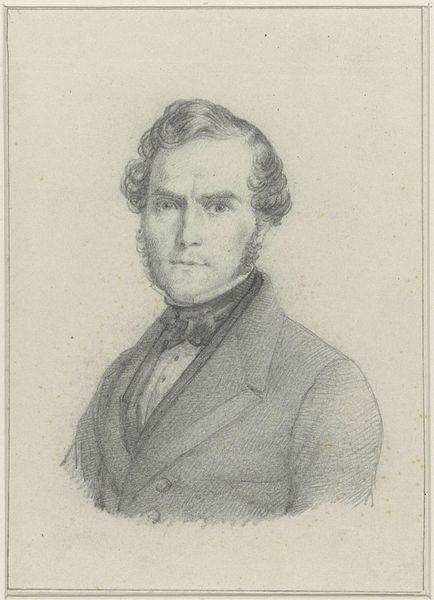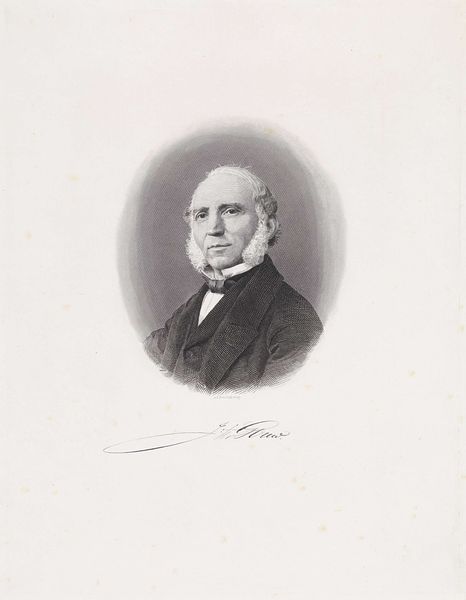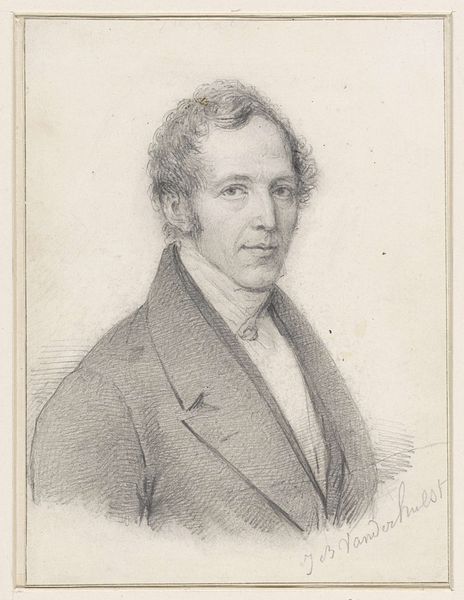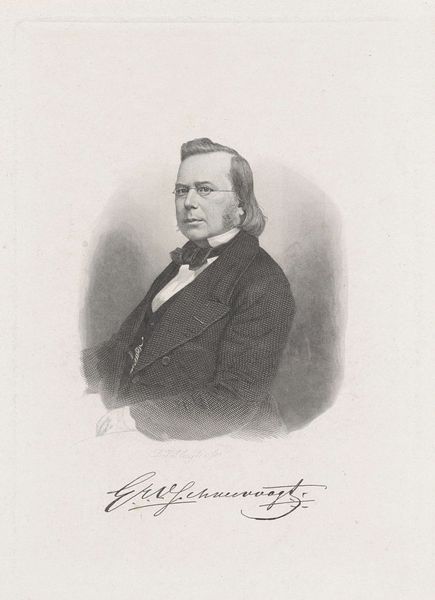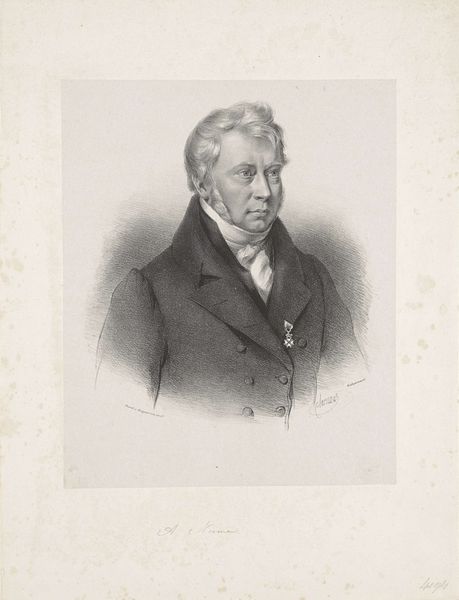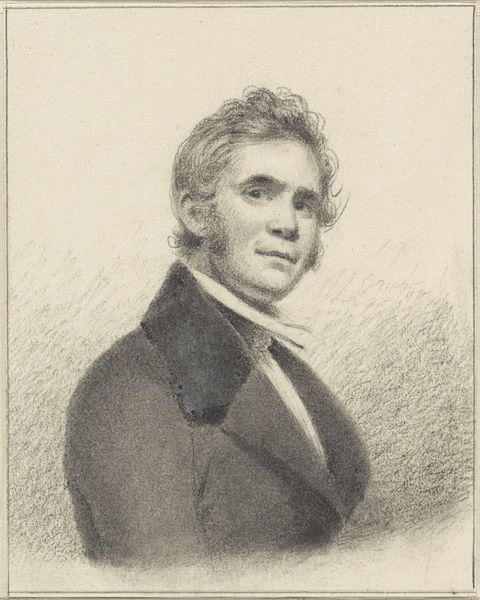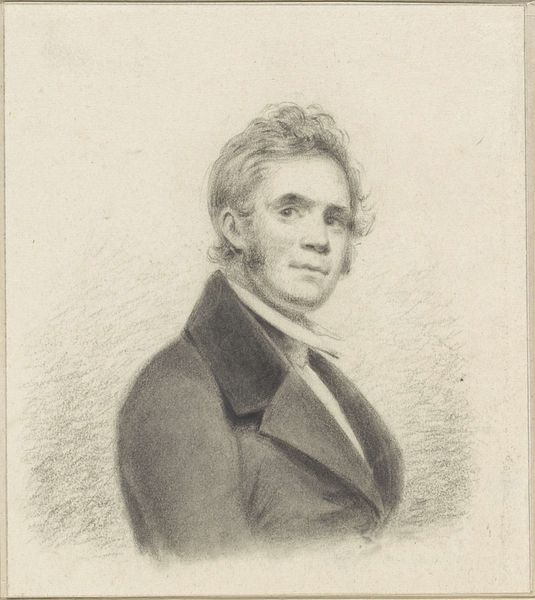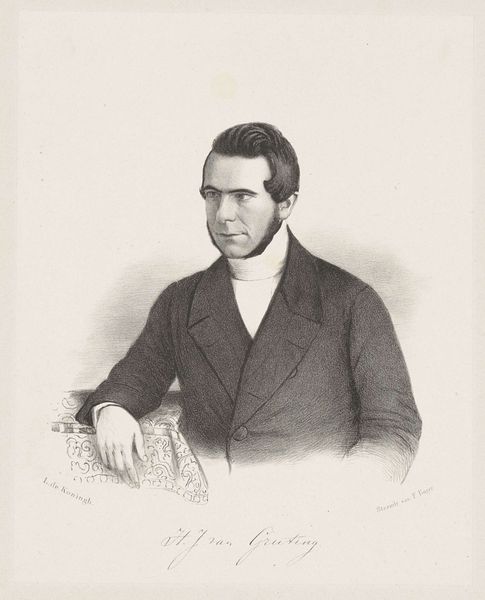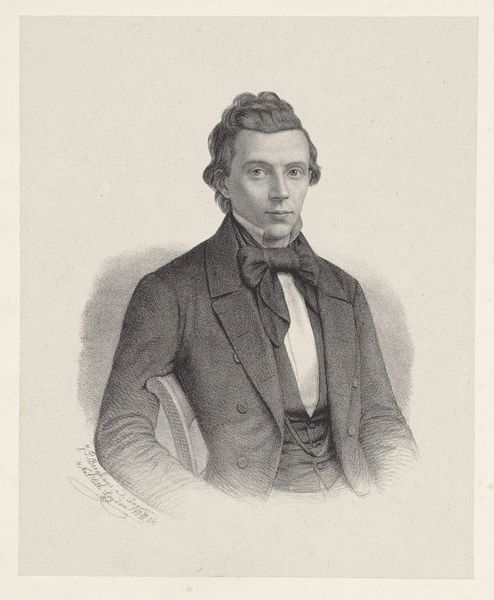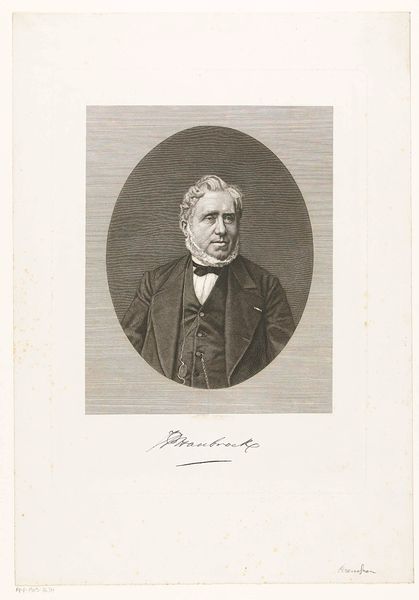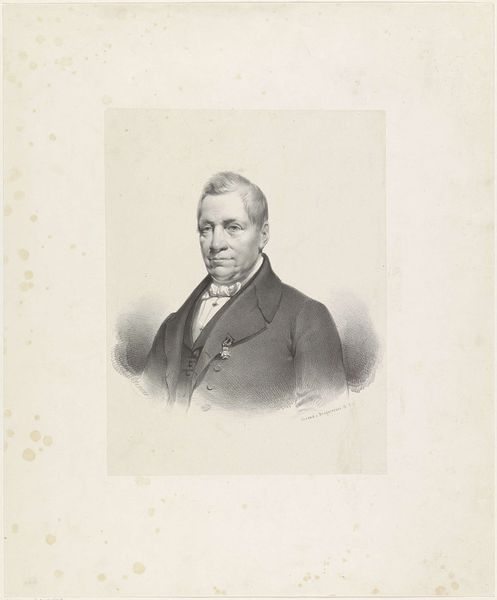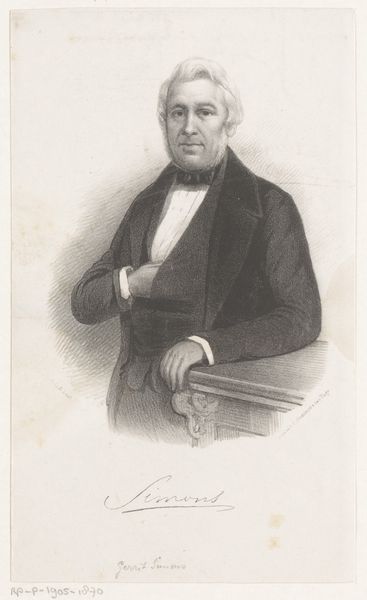
Portret van de arts en hoogleraar Johan Christiaan Gottlieb Evers 1845 - 1886
0:00
0:00
#
pencil drawn
#
light pencil work
#
photo restoration
#
pencil sketch
#
old engraving style
#
portrait reference
#
pencil drawing
#
limited contrast and shading
#
portrait drawing
#
pencil work
Dimensions: height 178 mm, width 114 mm
Copyright: Rijks Museum: Open Domain
Curator: Here we have a portrait of Johan Christiaan Gottlieb Evers, a physician and professor, rendered in a pencil drawing by Dirk Jurriaan Sluyter sometime between 1845 and 1886. It’s currently held in the collection of the Rijksmuseum. Editor: What strikes me first is the intensity in his eyes, almost piercing despite the soft medium. It’s an arresting image, though perhaps a tad austere. He looks like a man who wouldn’t suffer fools. Curator: Indeed. And what makes this seemingly simple portrait so interesting is the material context. Pencil drawings, especially portraits, became increasingly popular in the 19th century with the rise of the middle class. They were a more affordable alternative to painted portraits, democratizing image production. Editor: Ah, the Victorian Instagram! It makes me think of the quiet moments when one might try to really see the other person for their honest, authentic self. Do you suppose Evers knew Sluyter well? Or was he, perhaps, one of his patients? The drawing hints at intimacy. Curator: It’s plausible, but beyond the image itself, we can analyze the material and labor involved. Pencils themselves, even in this era, were objects of industry, refined graphite encased in wood, a small marvel of mass production facilitating artistic expression for many people. The choice of pencil over other media reflects socioeconomic shifts and accessibility. Editor: I do like that idea. The democratization of image creation through easily accessible tools! Makes me think anyone could produce a masterpiece with some graphite and will! Plus the gray monochrome lends it a certain melancholic quality; the world caught between two extremes, light and shadow, perhaps? Curator: That’s quite poetic. Thinking more about labor, we see how the artist utilizes shading to convey a sense of form and depth with very little contrast, creating a study in restrained technical skill. A skill, mind you, developed from possibly years of practice and workshops. Editor: And there we have a glimpse, no matter how ephemeral, into his soul. Thanks for this wonderful tour through materiality, craftsmanship, and accessibility! Curator: Thank you. I see art can speak across time through material culture in surprising, human ways.
Comments
No comments
Be the first to comment and join the conversation on the ultimate creative platform.
